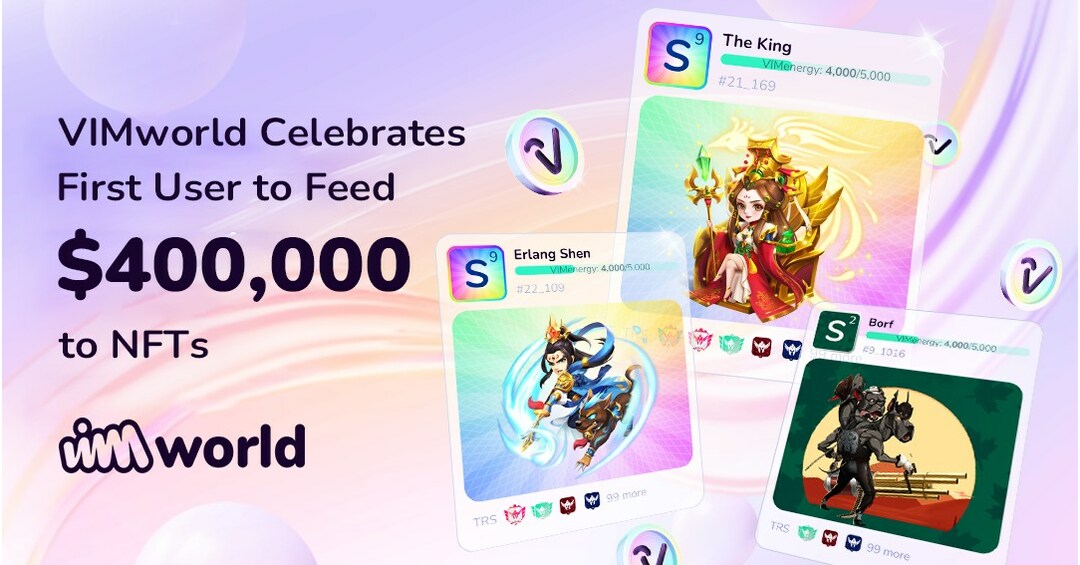2022 cancels The Dawn of NFTs

The meteoric rise of NFTs in 2021 has led to a lively debate about the future of non-fungible tokens. But while experts argue over the long-term viability of NFTs, digital collectibles maintain their stronghold on the market. According to Chainanalysis (blog), NFT collectors sent over $37 billion to NFT marketplaces as of May 1, 2022. This figure tops the $40 billion total sent in 2021.
However, the current cryptocurrency and blockchain market is a shaky ground with bitcoin tumbling and rampant inflation.
So, will we ever witness the imminent demise of NFTs? And what drives their value? Let’s find out.
What are NFTs, anyway?
Let’s say you’re an artist who wants to sell your masterpiece. You have painted it and you have full ownership of your painting. But instead of paying the agent to sell your painting, you can sell it directly to collectors through a digital auction. To do that, you need to transform your physical item into a digital collectible. And this is where NFTs come into play.
Simply put, NFTs are blockchain tokens that represent a unique digital item. Non-fungible tokens allow users to buy and sell ownership of unique digital objects without intermediaries.
NFTs are usually bought and sold on specialized marketplaces, and they give the holder ownership of the data, medium or commodity to which the token relates.
What does non-fungible mean?
To define the true meaning of ‘non-fungible’, let’s address what fungible means. Blockchain includes a whole lot of the same tokens, which can replace each other. In this way, the system can continue to function without disruption even after the components of the blockchain have been replaced.
For example, bitcoin and other cryptocurrencies are fungible. If you send someone a bitcoin or part of it, you can get one back. It also doesn’t have to be the same bitcoin or the same amount that you sent. Physical currency is also fungible – you can make a change or convert it to any other fiat.
However, NFTs cannot be replaced or split into standalone tokens. Each NFT is unique and exists in a single copy, thus prohibiting sharing. All information about its author, buyer and transactions is securely stored in a blockchain. In other words, an NFT is a digital certificate linked to a unique object.
In this sense, NFT is similar to real art. You can’t replace Monet’s paintings with the Mona Lisa – they just don’t compare.
What makes NFTs valuable?
In a general sense, non-fungible tokens have no physical value behind them. However, they still go up in value because of the community. And there is a rationale behind this upward dynamic.
Scarcity
Due to its blockchain nature, non-fungible tokens are minted once and for all. No living person can go back in time and manipulate the origin of NFTs. Let’s take the Bored Ape Yacht Club collection. The project was launched in 2021 with only 10,000 unique cartoon monkeys generated by algorithms. This lack has bred in the value of this collection, which now translates to $400K. Therefore, scarcity and exclusivity are among the cornerstones of the NFT ecosystem.
Besides, owning an NFT now is like owning a piece of art history. Valuable or not, non-fungible tokens have already passed into history as an era of digital art.
Provenance
Thanks to the blockchain (again), NFT ownership history remains visible and transparent. At the same time, authenticity and source are documented on the platform, which eliminates art forgery and theft.
On the contrary, to prove the authenticity of the Mona Lisa, a collector needs:
-
- A signed certificate of authenticity from a recognized authority.
- A signed statement from the artist (which is definitely impossible in this case).
Non-fungible tokens have all this information easily recorded in the blockchain which remains immutable until the blockchain exists.
Future value
The third and final component behind the value of NFT is its rising value. Once purchased, a digital collectible can rise in value governed by the overall demand or shortage of tokens. This means that buyers can sell their NFTs at a higher price than what they paid for them. In this sense, non-fungible tokens act as a long-term investment that can in some cases yield a return.
Is the NFT industry going to collapse soon?
There is much speculation in the industry whether the NFT industry is sustainable or not. While there are some concerns, it’s important to remember that the industry is still in its infancy. It is difficult to predict the future of an industry that is still so new.
That said, some factors could contribute to the collapse of the NFT industry. For example, if the prices of Ethereum and other blockchain-based assets continue to rise, it may become too expensive for people to participate.
Another factor refers to an oversaturated market. We may see more NFTs created than there are people interested in buying them. This can lead to a decrease in demand and prices, which can cause investors to lose interest.
The current NFT craze is often compared to the Dutch tulip mania when tulip bulbs were hyped to the sky and speculated in. When the exuberance dissipated, the tulip bubble collapsed.

Many experts believe that non-fungible tokens will follow in the footsteps of Dutch tulips. Limited supply, blockchain vulnerabilities, energy-intensive mining, and the ability to copy and paste your unique collectible can undermine the bright prospects of NFTs.
What does the future hold for NFTs?
Non-fungible tokens and the blockchain landscape in general offer untapped opportunities for wealthy collectors and enthusiasts alike. However, the NFT boom gives the impression of a fast-flying frenzy that is doomed to oblivion.
Nevertheless, non-fungible tokens combine the excitement of art ownership and modern technology, and are thus an attractive investment. Today, the growing popularity of NFTs is reflected in the numbers – the number of wallets traded in NFTs increased, from around 545,000 in 2020 to over 28 million in 2021.
For now, non-fungible tokens are set to ride the wave thanks to their use in games and unlimited potential in assets.
























